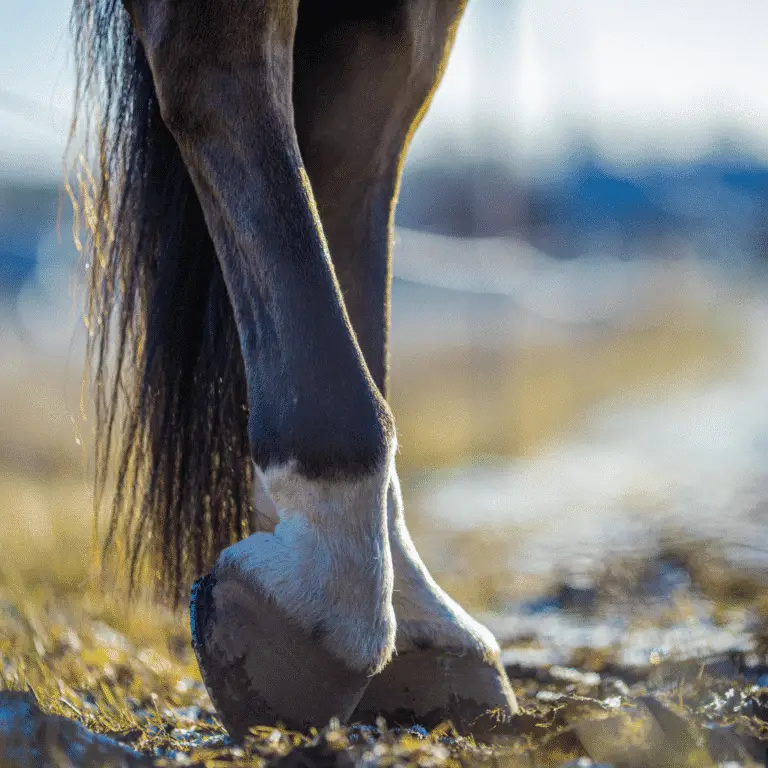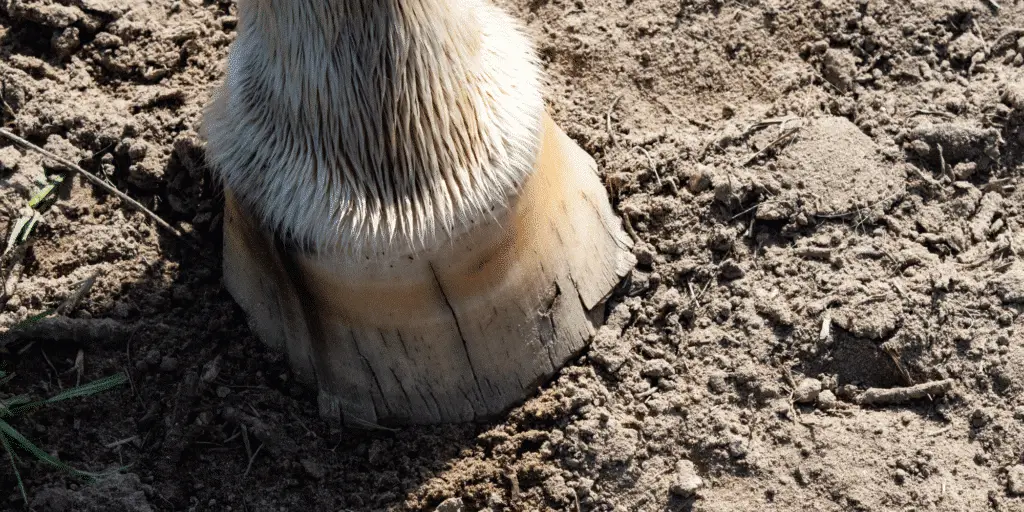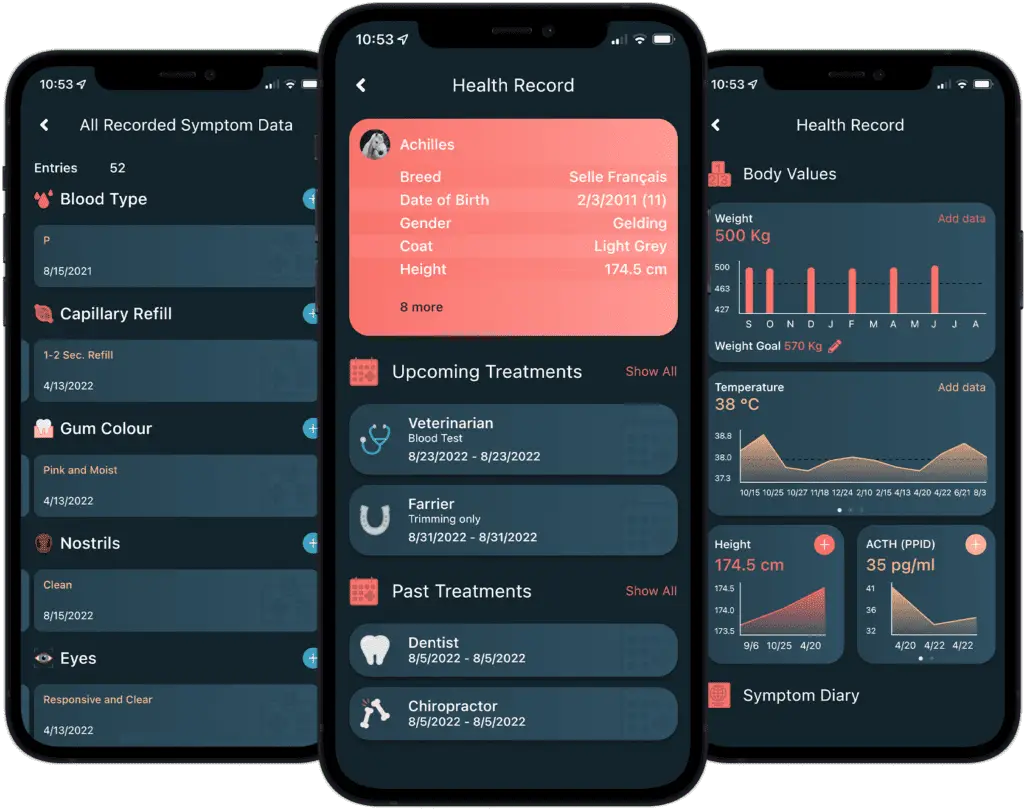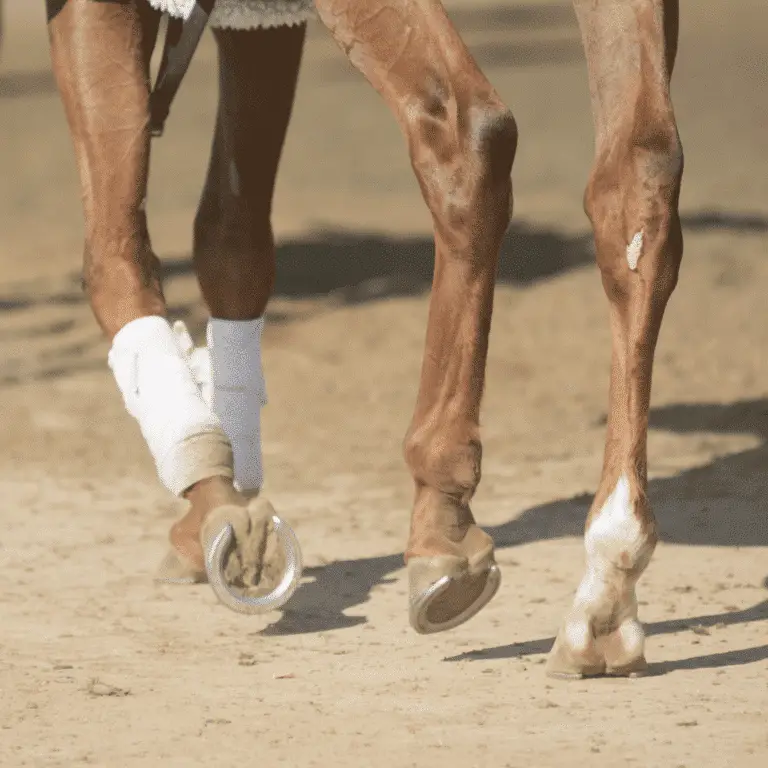
Bruised Sole in Horses
Seek veterinary advice if you suspect this disease.
A bruised sole in horses is a condition where the horse’s sole becomes tender and painful due to trauma or injury, often resulting in inflammation and discomfort.

Seek veterinary advice before applying any treatment.
These cracks originate from the coronary band and extend downward. Horses hoofs are composed of keratin, the same material that makes up human fingernails and toenails. In addition, they contain thin, hollow tubes and layered sheets of keratin-filled cells. This structure is usually enough to stop cracks, but as the horse runs or moves over rough ground, the huge amount of weight and stress on the hoof can split the structure apart, and, once a crack is started, it tends to grow.
Poor nutrition can also lead to hoof cracks, as well as reducing the hoof’s ability to grow. Biotin and other essential nutrients should be given in sufficient amounts to support the needs of your individual horse.
Types of cracks are usually identified as toe, quarter, or heel cracks, according to their location. Vertical cracks are classified as grass cracks (beginning at the ground surface and extending upward) or sand cracks (beginning at the coronet and extending downward). Horizontal cracks in the hoof wall are referred to as “blow-outs,” which are usually inconsequential unless they weaken the hoof to the point that a vertical crack occurs
Therapy first involves proper trimming of the foot to remove abnormal forces on the coronary band and wall. Once the farrier and veterinarian are satisfied that the foot is responding to the corrective trimming and shoeing, the crack should be debrided, and any moisture or sepsis treated with appropriate antiseptic until the crack is dry. Multiple wires can be applied across the crack to stabilize it. The crack can be filled with either a resilient acrylic or putty, but it is critical that there be no moisture or sepsis present. Fenestrated tubing can be placed between the deepest aspect of the crack and the acrylic to allow for drainage. The hoof is then bandaged until new horn formation is evident.
As a horse owner it is crucial to ensure your horse’s hooves are well cared for with a good hoof care routine: Pick out your horses’ hooves daily with a hoof pick. Moisturise the hoof every other day during the summer to help prevent splitting or cracking. Check shoes for wear and tear and signs that it’s time for a farrier visit – such as a loose shoe, risen clinches, or overgrown and misshapen feet. Check barefoot horses for splits, cracks, flares, and overgrown, misshapen hooves. Ensure that your local farrier attends shod feet every four to six weeks, and barefoot hooves every four to ten weeks.

Digital health management offers numerous benefits in modern equine healthcare.
With the Happie Horse App, you can track symptom patterns and body values, such as Temperature, Pulse and Respiration. Allowing you to notice abnormal changes in body and behaviour early on, leading to more successful treatments.
The Happie symptom checker allows you to add all of your horse’s abnormal symptoms in order to present potential causes and diseases.

Seek veterinary advice if you suspect this disease.
A bruised sole in horses is a condition where the horse’s sole becomes tender and painful due to trauma or injury, often resulting in inflammation and discomfort.

Seek veterinary advice if you suspect this disease.
Canker is a chronic infection of the hoof characterized by the overgrowth of abnormal tissue in the frog and sole, often with a foul odor.

Heel Bulb Laceration in Horses Seek veterinary advice before applying any treatment. Lacerations of traumatic origin that occur in the